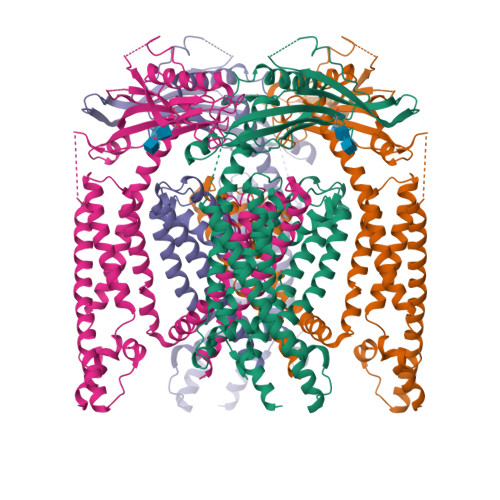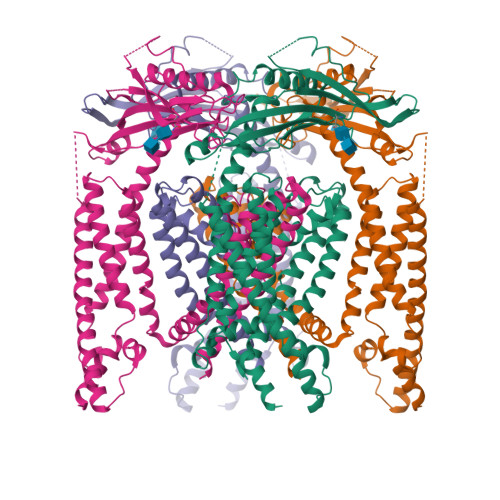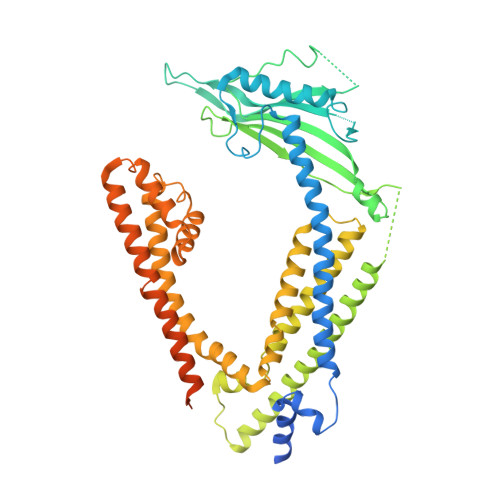Structure of mammalian endolysosomal TRPML1 channel in nanodiscs.
Chen, Q., She, J., Zeng, W., Guo, J., Xu, H., Bai, X.C., Jiang, Y.(2017) Nature 550: 415-418
- PubMed: 29019981
- DOI: https://doi.org/10.1038/nature24035
- Primary Citation of Related Structures:
5WPQ, 5WPT, 5WPV - PubMed Abstract:
Transient receptor potential mucolipin 1 (TRPML1) is a cation channel located within endosomal and lysosomal membranes. Ubiquitously expressed in mammalian cells, its loss-of-function mutations are the direct cause of type IV mucolipidosis, an autosomal recessive lysosomal storage disease. Here we present the single-particle electron cryo-microscopy structure of the mouse TRPML1 channel embedded in nanodiscs. Combined with mutagenesis analysis, the TRPML1 structure reveals that phosphatidylinositol-3,5-bisphosphate (PtdIns(3,5)P 2 ) binds to the N terminus of the channel-distal from the pore-and the helix-turn-helix extension between segments S2 and S3 probably couples ligand binding to pore opening. The tightly packed selectivity filter contains multiple ion-binding sites, and the conserved acidic residues form the luminal Ca 2+ -blocking site that confers luminal pH and Ca 2+ modulation on channel conductance. A luminal linker domain forms a fenestrated canopy atop the channel, providing several luminal ion passages to the pore and creating a negative electrostatic trap, with a preference for divalent cations, at the luminal entrance. The structure also reveals two equally distributed S4-S5 linker conformations in the closed channel, suggesting an S4-S5 linker-mediated PtdInsP 2 gating mechanism among TRPML channels.
Organizational Affiliation:
Department of Physiology, University of Texas Southwestern Medical Center, Dallas, Texas 75390-9040, USA.


















